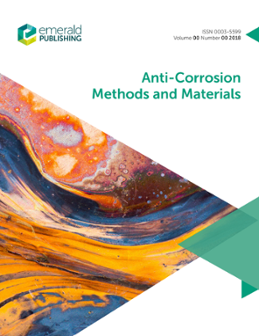Table of contents
CORROSION COMMENTARY
SCOTTISH FOOD SHOPS FACE CORROSION. The new Food and Drugs (Scotland) Act which comes into force this year will pose a wide variety of problems for equipment firms and for their…
THE REPAIR OF CAR PARTS BY CHROMIUM PLATING
A.W. RykowaThe wear of different car parts is affected by a variety of external factors. Mechanical wear takes the greatest toll of moving surfaces. Minute as the particles which wear away…
Metal Cleaning Methods: TUMBLING AND BLAST CLEANING
Cleaning metal used in industrial processes has been necessary for almost as long as metal has been used in industrial processes. Today it is not only possible to remove very…
ELECTRIC SALT‐BATH FURNACES: Greater Efficiency than Conventional Furnaces
This article discusses the use and development of electric salt‐bath furnaces, their general construction and some of their recent applications. These furnaces are more efficient…
CORROSION‐RESISTANT FLOORS: PART 2
V. EvansThe first part of this article, published last month, was primarily concerned with a general approach to the problem and dealt with some of the materials used for corrosion…
CORROSION RESEARCH LABORATORIES—11: Fulmer Research Institute
H.K. FarmeryFulmer Research Institute was founded in 1947 by the late managing director of Almin Ltd., Colonel W. C. Devereux, its object being to provide confidential research facilities for…
METAL PRE‐TREATMENT: By the Sodium Hydride Process
CONVENTIONAL processes for descaling metals are generally by acid pickling or sand or shot blasting. Both these processes inevitably result in metal loss: acid pickling has the…
PRODUCTS AND PROCESSES: PROVIDING INDUSTRY WITH THE MEANS TO COMBAT CORROSION
Rust‐preventing Composition. A rust‐preventing composition, Anodite, is stated to be non‐poisonous and ready for use. Its action can be explained in terms of the electrochemical…
CORROSION RESEARCH ROUND‐UP
GERMANY Galvanic Cells with Electron Acceptors. Current densities, potentials and corrosion of galvanic cells with constant reference electrodes were measured for a range of pH…
STAINLESS STEEL IN THE FOOD INDUSTRY: USED FOR THE CARRIAGE OF MANY CORROSIVE LIQUIDS
With the improvement in the quality of stainless steels experienced in recent years this material is increasingly favoured by the food industry because of its good resistance to…
MASTIC “BARRIER” TO GALVANIC CORROSION: Corrosion Prevention on Ships of Different Metals
Electro‐chemical action is becoming an increasingly serious cause of corrosion, particularly with new metals such as aluminium coming into wider use for shipbuilding. In modern…
PAINTS VERSUS CORROSION: O.C.C.A. EXHIBITION
The Oil and Colour Chemists' Association recently held their ninth Technical Exhibitioti in London. A number of products at the exhibition were specifically designed for…
PLASTICS COATING: A Protective Service to Industry
Just off the Guildford By‐Pass in Surrey, on an area of land scheduled for factory development, stands the first completed factory of the Woodbridge Industrial Estate. This modern…
Technical Literature
Electro‐chemical Deposition of Metals by the ‘Fescol’ Process. Fescol Ltd., North Road, London, N.7. This booklet includes a detailed technical section devoted to the properties…

ISSN:
0003-5599Online date, start – end:
1954Copyright Holder:
Emerald Publishing LimitedOpen Access:
hybridEditor:
- Professor Yu Yan